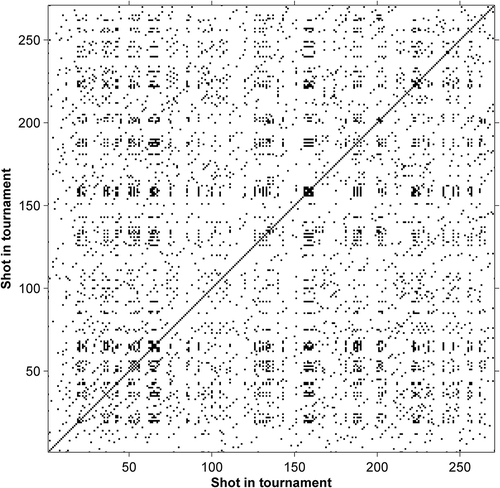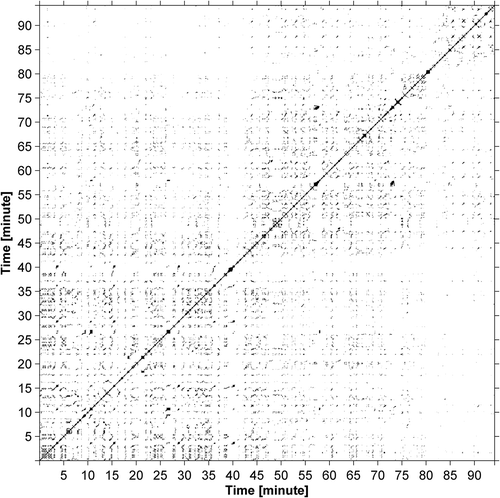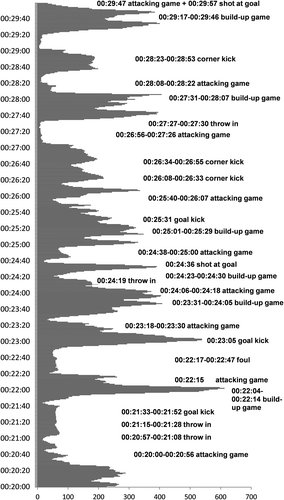Figures & data
Figure 2. False nearest neighbour function of one of the golfers at THE PLAYERS Championship 2011 using tau = 2.

Figure 3. Recurrence plot of K. J. Choi’s performance at THE PLAYERS Championship 2011 (m = 2, tau = 2, ε = 0.14); black dots represent recurring states.

Figure 4. Recurrence plot of one of the investigated matches (result 0–0; m = 1, tau = 1, ε = 9); black dots represent recurring states.

Figure 5. Recurrence points per second from one of the matches of the data set (result 0–0); discrete game phases are annotated.

Table 1. Pearson correlations between the game statistics number of goal shots, number of goals, number of corner kicks, number of fouls and covered distances of all players during a match and the RQA parameters RR, DET, L, LAM and TT of all investigated games.

